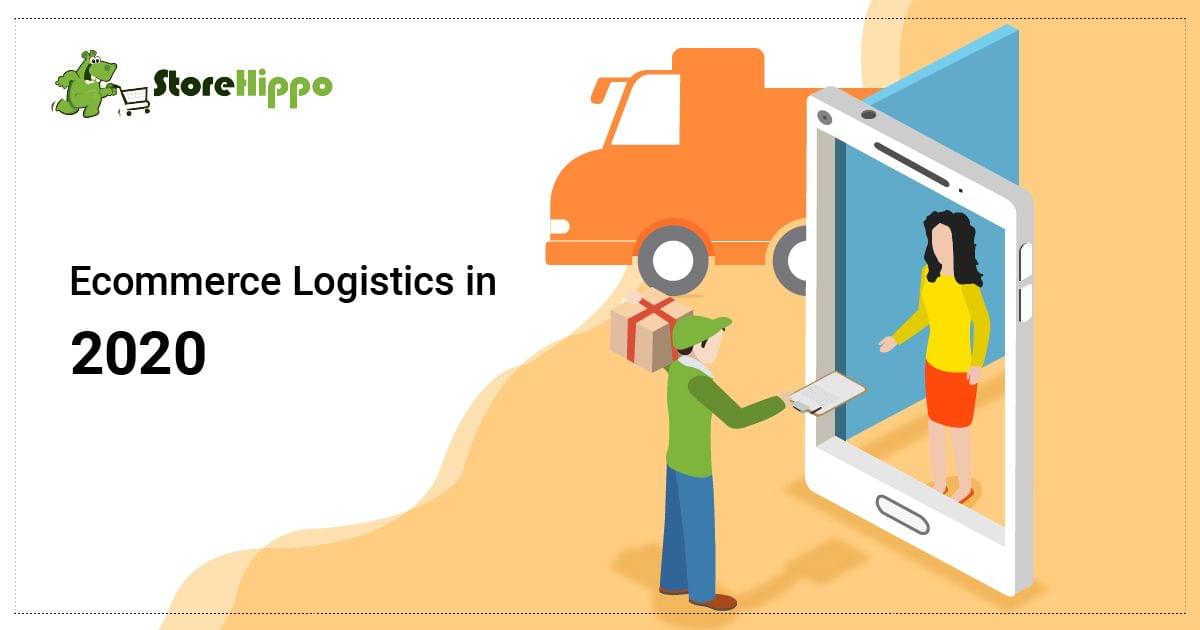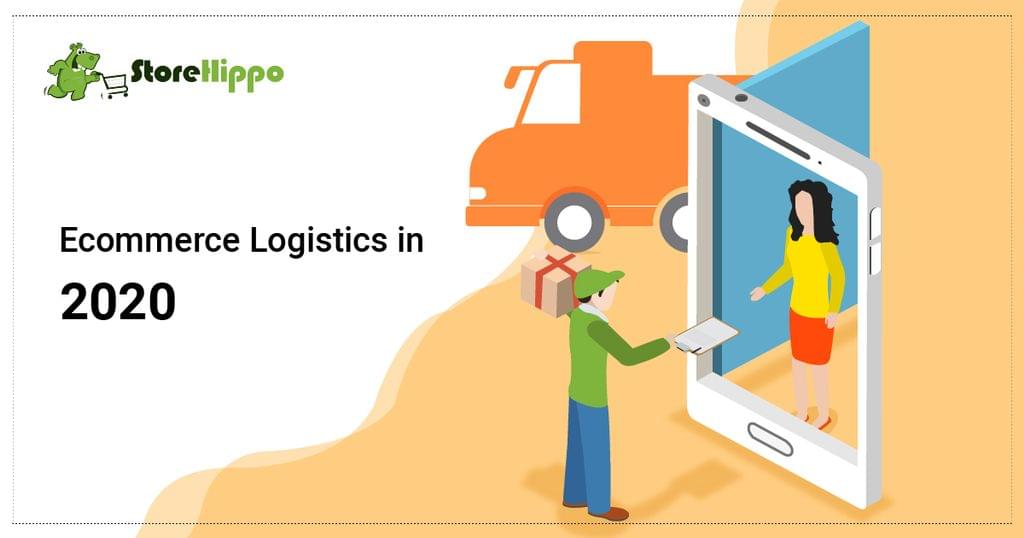Change is the only constant. The same holds true for business strategies and market dynamics. In today’s e-commerce era, where everything works on clicks, you can’t be expecting stagnancy, can you?
As we close the ledger in another year, we have to change retail scenarios and consumer expectations that have only matured since last year. We have noticed people getting dependent on online shopping more than ever. Amidst all of this, the most crucial link to a successful e-commerce business, i.e. logistics has also revamped.
In 2019, most companies made rapid changes to make their supply chain well-functioned and effective. Business owners adopted new technologies that gave them opportunities to innovate and bring something better to the table.
As an e-retailer, you might have looked into creating a streamlined fulfilment strategy to surprise and delight your customers. You might have come up with free-shipping offers or better and flexible return options. You might have gone to the back-end and looked for loopholes that may be weakening your shipping strategy. Or you might have partnered with a reliable e-commerce courier provider for a better customer service experience.
No matter what your modus operandi was, you certainly tried for flexible shipping strategies and omnichannel options to get products delivered as per need.
In this blog, we have reviewed shipping management trends that helped companies to successfully close the book for 2019. Going forward we will also see the changing landscape that will shape the coming year.
Table of Contents
Top shipping trends that changed the way businesses handled their Logistics in 2019
1. The Big Promise
Popular market surveys show that out of the total online purchases, 30-35% of purchases are slated for returns. While returns are unpreventable, they can be controlled if part of them is due to a lack of fulfilling the delivery promise.
One of the reasons that customers never make a comeback is that there is a gap between what brands promise and what they deliver. So even if your products or services are good and your rates are reasonable, the inability of your e-commerce courier service to deliver on time can dishearten your buyers.
In 2019, retailers got creative with their delivery promises. Many started providing buy-online-pickup-in-store (BOPIS) options and using customer data to tailor their offerings to their specific audience.
2. The Unboxing Experience
Does packaging matter? Of course, it does. Initially, packaging was looked upon as a throwaway vessel and retailers hardly paid any attention to it. But the fact is that your customers like to unwrap a beautiful box rather than an uninteresting package.
From the logistics viewpoint, the packaging is often the first tangible experience customers have with your brand. So why not enhance it?
2019 saw a wave of colourful and attractive packages as per product size, type and material. This gave entrepreneurs a point of differentiation from their competitors. It also helped them to manage costs by optimising packaging.
This year, packaging became a unique and personalised touchpoint for customers - a factor that often went underutilised.
3. Behind the scene
Tech has somehow managed to get all the attention in the retail and supply chain industry and its usefulness cannot be denied. But companies still need human brains behind the tech, isn’t it? The touch of personalisation that people and e-commerce courier service partners can add to the brand, technology cannot.
Brands that made their personnel an important part of their shipment strategy and customers their focus, outgrew their competitors in 2019.
Throughout the year, the demand for skilled, forward-looking supply chain professionals was high. Besides helping out roll swift deliveries, skilled professionals also added to newer ideas for innovation.
4. Flexibility
Traditionally, supply chains were anything but flexible. They were strategized to manage static businesses with centralised demand. This changed drastically in 2019.
Options such as partial fulfilment in logistics (i.e. splitting the orders and delivering urgent orders first followed by other items of the cart) and opting multiple carriers paved way for greater flexibility.
More carriers mean more options and greater flexibility in terms of location of delivery, time of delivery and more. Multiple carriers also helped omnichannel shipping options.
Also, creating on-demand warehousing, scheduled picks up, etc. made supply chains more flexible and responsive than ever. Flexibility in logistics not only benefited the customers but also the entrepreneurs as they helped to manage costs, resources and to an extent even manpower.
5. Eco-friendliness
Look at international brands like Everlane and Girlfriend Collective. These brands have embraced sustainability and have made it part of their brand ethos. Why do you think so?
Customer consciousness for the environment has made them join hands with brands who support this cause and go for sustainably-made products.
This adds transparency to your supply chain which is highly appreciated by your customers. If you haven’t yet thought about this one, maybe your e-commerce courier service carrier can help you with this.
One-third of firms worldwide are targeting more sustainable supply chains and so this one remained a trend throughout the year.
Top supply chain trends for 2019
- Retailers got smarter about their delivery promises, fulfilling them basis customer data
- Entrepreneurs leveraged customers unboxing experience
- Supply chain employment record scored high
- Brands invested in automated options for increased supply chain flexibility
- Recycling, collaborative logistics and innovation to increase sustainability in supply chain took a centre stage
The changing logistics landscape…
The latest e-commerce growth forecast suggests that globally e-commerce sales will increase to 16% of all sales in 2020. The changing supply chain landscape in the coming year is presenting online retailers with new and innovative ways to trade online and make their products available to customers.
As more and more entrepreneurs dive into the e-commerce pool, there have been newer tools and features to help them cope up with customer expectations. This proposes the question of what will be the logistics trend in the coming year. Let’s quickly sneak a peek.
Mobile-first
Back in 2017, it was predicted that by the end of 2019, mobile would account for 79% of all web traffic. This explains why mobile-friendly approach is no longer a nice-to-have feature for your brand. It is a must.
Besides, Google rewarding your site with higher rankings, a mobile-first approach helps you in your shipment strategy too.
Supposedly, your customer wants to check the shipment status or want to cancel or replace the order? He or she is likely to do it from their phone, isn’t it? In this case, having a responsive website will prove advantageous for you and your e-commerce courier service partner.
In 2020, a mobile-first approach will help you curate a fine fulfilment strategy since it will give everyone the ease of accessibility from anywhere and everywhere.
Automation
2019 saw the beginning of automation for better linkages within the fulfilment chain such as real-time tracking. This feature enables entrepreneurs, customers as well as carriers to check the exact location of the shipment after it leaves the warehouse.
It saves a lot of time and energy because tracking shipments allows you to check for canceled orders, wrong deliveries, delayed deliveries and more.
Likewise, thanks to automation in logistics for processes like bulk order uploads and automatic order sync. These have replaced manual interventions speeding up every single order and assigning them to the carrier.
One of the top trends for shipping chains in 2020 is going to be automation since it cuts down the number of processes and reduces the scope of error.
Easy Returns
The answer to why customers never revisit your site could lie in your return policy. Hence as you go about streamlining forward logistics, you might want to look at the reverse flow too.
Customers want nothing but the ease of shopping along with the ease of returns. In the coming year, if you can ensure that they can safely return the products without any hassles, they are likely to stick by. One way to do this is to clearly state your return policies on the website and then keep your word.
As far as return logistics is concerned, dear entrepreneur, be a trendsetter this year.
Payment options
Nowadays, most e-commerce sites offer customers multiple payment options. However, industry estimates suggest that 60-75% online orders are still paid as CoD. This is especially true if you have orders coming up from Tier I and Tier II cities.
As you go about planning your fulfilment strategy, make sure you go for CoD support cycles. You might also want to choose an e-commerce courier service partner that supports this payment option.
You need to look for fresh ideas in 2020 for improving your supply chain. But the best strategy includes to retain old practices and thrive upon them.
Shipping Aggregator Platform
If you haven’t yet thought about this one, it’s time to make the big leap. Most online sellers have already started relying on shipping aggregator platforms that offer an umbrella of shipping services.
Besides, having a host of domestic and international shipping companies on board, these come with excellent in-built features to streamline logistics.
In the coming year, e-commerce courier aggregators will be the best choice for e-retailers.
Top supply chain trends for 2019(and will continue to improve in 2020)
- Enhancing customer experience by opting for a mobile-first approach
- Automating processes for optimising time and cost and eliminating the scope of error
- Strengthening reverse logistics
- Providing multiple and flexible payment options
- Relying on a good shipping aggregator platform
StoreHippo understands how crucial streamlined shipping is for the success of your online business. To help you get hassle-free, discounted shipping solutions for your business StoreHippo offers integrated logistics with ShipKaro- India’s number one shipping aggregator platform.
The integrated shipping services offer you a clear advantage over traditionally-managed ways of shipping. It not only simplifies your logistics but automates the whole process at a fraction of the cost that goes to build your in-house shipment department.
Also, you get the benefit of multiple choices of shipping providers which are otherwise very difficult to obtain at bargain rates.
Interested to know the way forward with your logistics in 2020? Get in touch with us today or drop us a line below and we will be happy to help!





















Leave a Reply